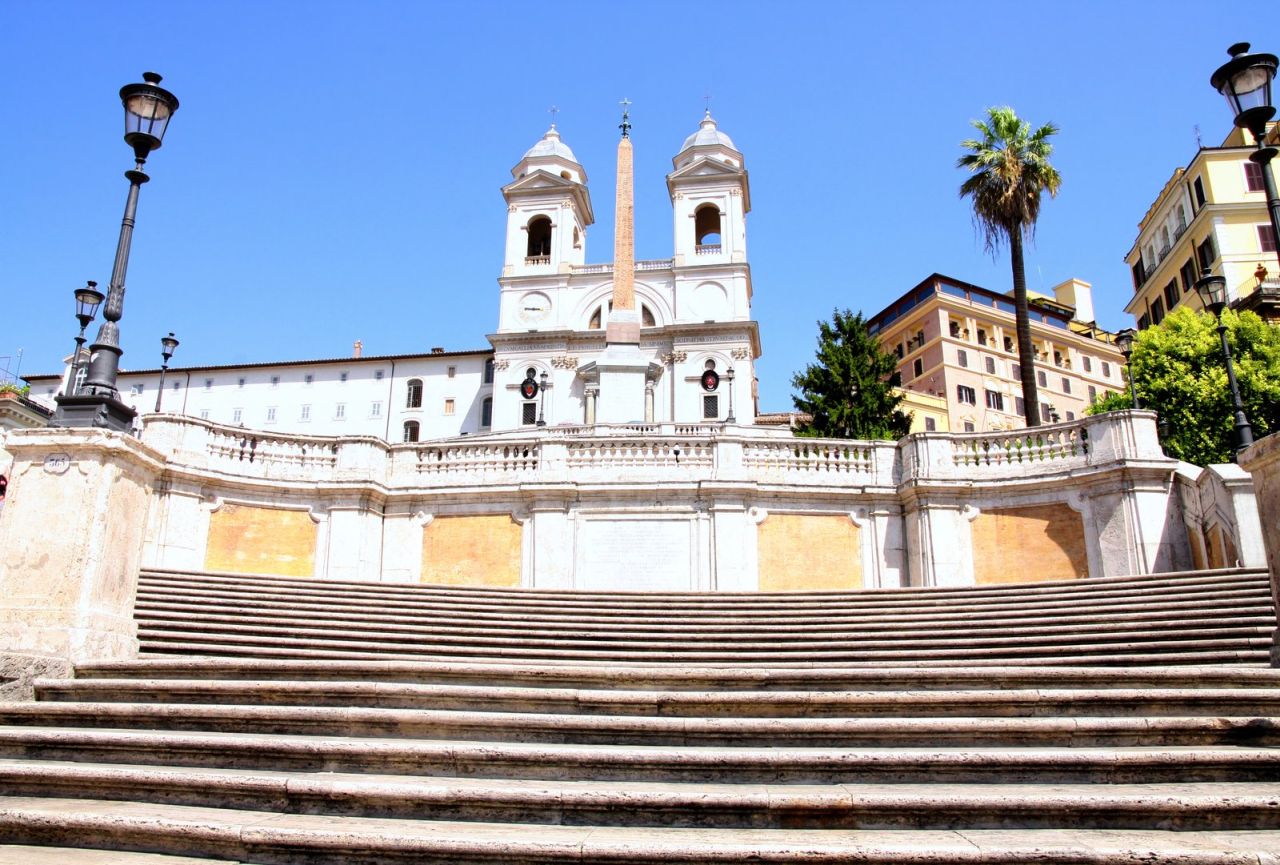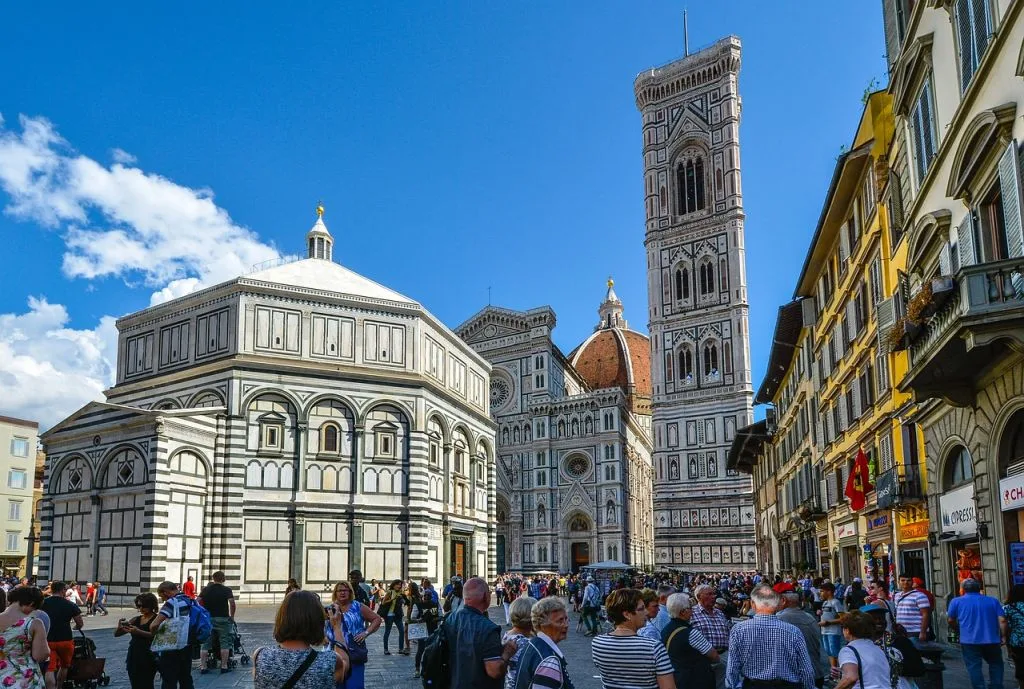Spanish Steps
Address
Piazza di Spagna, 00187 Roma
GPS
41.9057477, 12.4821294
One of Rome’s most famous landmarks, the Spanish Steps never fail to impress visitors. From the summit of Pincian Hill, visitors can take the grand staircase all the way down to the ground level of Spanish Square (Piazza di Spagna in Italian).
This tourist attraction is one of Rome’s most famous buildings. Wide baroque staircases are a major source of inspiration for filmmakers and artists, drawing in crowds of visitors every year. Plus, contemporary luxury brands like Prada, Dolce & Gabbana, Bulgari, and Dior want to locate their stores in close proximity to this magnificent structure.
The history
According to the original blueprint, the Spanish Steps were to be a monumental and pompous collection of buildings. The only contentious element of the building was a statue of Louis 14 on a horse. However, the Roman government took the slight as an affront and blocked the building plan.
 Only in 1717 did architects hold a competition, and the inventive duo of Alessandro Specchi and Francesco de Sanctis emerged victorious. The construction work began in 1723. The majority of the time, however, was spent on preparatory work, such as shaping the hill’s base and laying the foundation for the square.
Only in 1717 did architects hold a competition, and the inventive duo of Alessandro Specchi and Francesco de Sanctis emerged victorious. The construction work began in 1723. The majority of the time, however, was spent on preparatory work, such as shaping the hill’s base and laying the foundation for the square.
As a result, the stairwell’s broad middle section was bookended by two slimmer wings. From this vantage point, you may easily traverse the gap between the moon’s halves. Stone ledges fashioned in the Italian baroque style line the sides of the stairwell on either side. The architects made a conscious decision at that time to tone down the stairwell’s ornateness. They made use of the crown and eagle, two classic heraldic symbols associated with the Pope and the Bourbon monarchy.
There were no major renovations to the Spanish Steps between 1725 and the 1990s of the 20th century. The rain and filth had taken their toll on the ancient stones and crumbling steps, removing any sense of romance they had held. So, the local government raised the money to restore this historic building. In 1997, after years of neglect, Rome’s most well-known attractions once again made it to the top of visitors’ must-see lists. The most magnificent and gorgeous stairways in all of Europe once again attracted massive crowds of tourists.
Spanish steps today
Every year in the spring, the stairs is splashed with pink and vibrant colours from the flowerpots filled with azaleas and petunias. In the winter, those same spacious steps host brief performances of Christmas plays. The church of Trinita dei Monti, located just beyond the Spanish Steps, also provides a magnificent backdrop.
 Visitors can look out over the Spanish Square’s centerpiece, the Fountain of the Old Boat (Fontana della Barcaccia), from atop the Spanish Steps. The famous artist Pietro Bernini, working at the turn of the 17th century, designed the fountain.
Visitors can look out over the Spanish Square’s centerpiece, the Fountain of the Old Boat (Fontana della Barcaccia), from atop the Spanish Steps. The famous artist Pietro Bernini, working at the turn of the 17th century, designed the fountain.
The Spanish Steps in Rome are just as beautiful at night as they are during the day. Light gently illuminates the stairs, casting long shadows over the ornate Baroque design. The tranquilly and romance of the setting make it difficult to leave. It’s a magical experience to climb the steps at night and see the city stretch out below you.
The Spanish Steps are conveniently situated near several different modes of public transportation in the city centre of Rome. Stop at the Spagna station on Line A of Rome’s subway system for the closest access. The approach to the stairs is minimal from that point. The bus stop for Via Due Macelli is located on the N119 route. Many of Rome’s other famous landmarks, such as the Trevi Fountain and the Pantheon, may be reached on foot from the Spanish Steps.
The Spanish Steps are a must-see for any tourist in Rome because of how simple and accessible they are to reach by metro, bus, or on foot.



